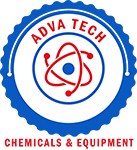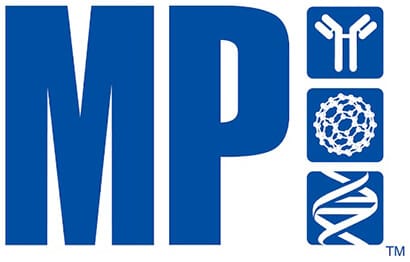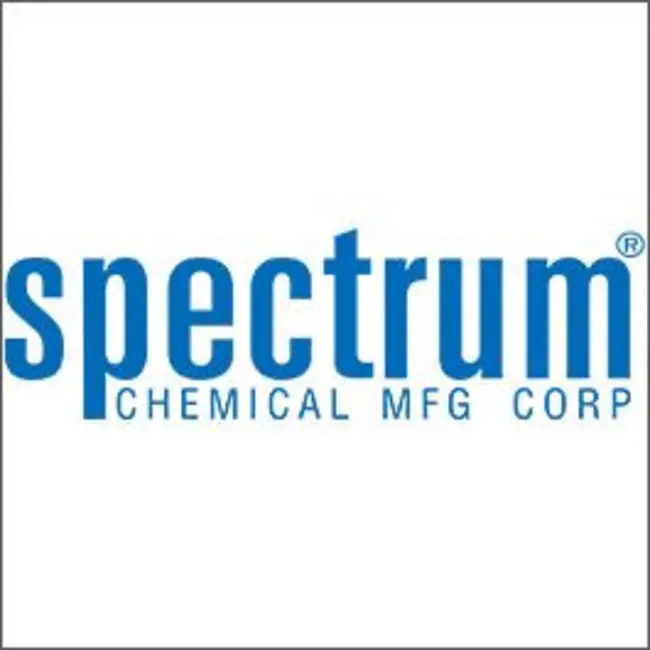GenScript Biotech
Showing 1301–1350 of 2554 results
-
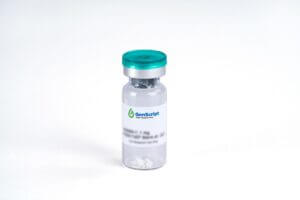
IL-10, Rat (CHO-expressed)
$2,018.25 Add to cart View Product DetailsInterleukin-10 (IL-10), initially known as Cytokine Synthesis Inhibitory Factor (CSIF), belongs to the IL-10 family and shares more than 80% sequence homology with the Epstein-Barr Virus protein BCRFI. It is produced by many immune cells, such as T-cells, macrophages, mast cells and dendritic cells. It is usually secreted as a homodimer and, upon binding to its receptor, inhibits the synthesis of a number of cytokines, including IFN-gamma, IL-2, IL-3, TNF and GM-CSF produced by activated macrophages and Th2 cells. It also displays the ability to suppress Antigen-Presenting Cell (APC) function. The net effect of Interleukin-10 appears to be inhibitory; however, stimulatory effects, such as stimulation of B cell maturation and antibody production, are also reported.
-
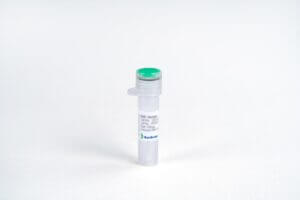
IL-10, Rat (CHO-expressed)
$86.25 Add to cart View Product DetailsInterleukin-10 (IL-10), initially known as Cytokine Synthesis Inhibitory Factor (CSIF), belongs to the IL-10 family and shares more than 80% sequence homology with the Epstein-Barr Virus protein BCRFI. It is produced by many immune cells, such as T-cells, macrophages, mast cells and dendritic cells. It is usually secreted as a homodimer and, upon binding to its receptor, inhibits the synthesis of a number of cytokines, including IFN-gamma, IL-2, IL-3, TNF and GM-CSF produced by activated macrophages and Th2 cells. It also displays the ability to suppress Antigen-Presenting Cell (APC) function. The net effect of Interleukin-10 appears to be inhibitory; however, stimulatory effects, such as stimulation of B cell maturation and antibody production, are also reported.
-

IL-10, Rat (CHO-expressed)
$271.69 Add to cart View Product DetailsInterleukin-10 (IL-10), initially known as Cytokine Synthesis Inhibitory Factor (CSIF), belongs to the IL-10 family and shares more than 80% sequence homology with the Epstein-Barr Virus protein BCRFI. It is produced by many immune cells, such as T-cells, macrophages, mast cells and dendritic cells. It is usually secreted as a homodimer and, upon binding to its receptor, inhibits the synthesis of a number of cytokines, including IFN-gamma, IL-2, IL-3, TNF and GM-CSF produced by activated macrophages and Th2 cells. It also displays the ability to suppress Antigen-Presenting Cell (APC) function. The net effect of Interleukin-10 appears to be inhibitory; however, stimulatory effects, such as stimulation of B cell maturation and antibody production, are also reported.
-
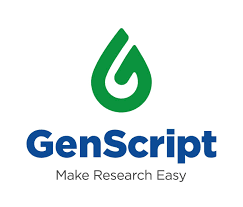
IL-11 Fc Chimera, Human
$2,328.75 Add to cart View Product DetailsInterleukin-11 is a pleiotropic cytokine that was originally detected in the conditioned medium ofan IL-1α-stimulated primate bone marrow stromal cell line (PU-34) as a mitogen for the IL-6-responsive mouse plasmacytoma cell line T11. IL-11 has multiple effects on both hematopoietic and non-hematopoietic cells. Many of the biological effects described for IL-11 overlap with those for IL-6. In vitro, IL-11 can synergize with IL-3, IL-4 and SCF to shorten the G0 period of early hematopoietic progenitors. IL-11 alsoenhances the IL-3-dependent megakaryocyte colony formation. IL-11 has been found to stimulate the T cell-dependent development of specific immunoglobulin-secreting B cells.
-

IL-11 Fc Chimera, Human
$99.19 Add to cart View Product DetailsInterleukin-11 is a pleiotropic cytokine that was originally detected in the conditioned medium ofan IL-1α-stimulated primate bone marrow stromal cell line (PU-34) as a mitogen for the IL-6-responsive mouse plasmacytoma cell line T11. IL-11 has multiple effects on both hematopoietic and non-hematopoietic cells. Many of the biological effects described for IL-11 overlap with those for IL-6. In vitro, IL-11 can synergize with IL-3, IL-4 and SCF to shorten the G0 period of early hematopoietic progenitors. IL-11 alsoenhances the IL-3-dependent megakaryocyte colony formation. IL-11 has been found to stimulate the T cell-dependent development of specific immunoglobulin-secreting B cells.
-

IL-11 Fc Chimera, Human
$319.13 Add to cart View Product DetailsInterleukin-11 is a pleiotropic cytokine that was originally detected in the conditioned medium ofan IL-1α-stimulated primate bone marrow stromal cell line (PU-34) as a mitogen for the IL-6-responsive mouse plasmacytoma cell line T11. IL-11 has multiple effects on both hematopoietic and non-hematopoietic cells. Many of the biological effects described for IL-11 overlap with those for IL-6. In vitro, IL-11 can synergize with IL-3, IL-4 and SCF to shorten the G0 period of early hematopoietic progenitors. IL-11 alsoenhances the IL-3-dependent megakaryocyte colony formation. IL-11 has been found to stimulate the T cell-dependent development of specific immunoglobulin-secreting B cells.
-

IL-11, Human(CHO-expressed)
$2,785.88 Add to cart View Product DetailsInterleukin-11 is a pleiotropic cytokine that was originally detected in the conditioned medium of an IL-1α-stimulated primate bone marrow stromal cell line (PU-34) as a mitogen for the IL-6-responsive mouse plasmacytoma cell line T11. IL-11 has multiple effects on both hematopoietic and non-hematopoietic cells. Many of the biological effects described for IL-11 overlap with those for IL-6. In vitro, IL-11 can synergize with IL-3, IL-4 and SCF to shorten the G0 period of early hematopoietic progenitors. IL-11 also enhances the IL-3-dependent megakaryocyte colony formation. IL-11 has been found to stimulate the T cell-dependent development of specific immunoglobulin-secreting B cells.
-

IL-11, Human(CHO-expressed)
$271.69 Add to cart View Product DetailsInterleukin-11 is a pleiotropic cytokine that was originally detected in the conditioned medium of an IL-1α-stimulated primate bone marrow stromal cell line (PU-34) as a mitogen for the IL-6-responsive mouse plasmacytoma cell line T11. IL-11 has multiple effects on both hematopoietic and non-hematopoietic cells. Many of the biological effects described for IL-11 overlap with those for IL-6. In vitro, IL-11 can synergize with IL-3, IL-4 and SCF to shorten the G0 period of early hematopoietic progenitors. IL-11 also enhances the IL-3-dependent megakaryocyte colony formation. IL-11 has been found to stimulate the T cell-dependent development of specific immunoglobulin-secreting B cells.
-

IL-11, Human(CHO-expressed)
$86.25 Add to cart View Product DetailsInterleukin-11 is a pleiotropic cytokine that was originally detected in the conditioned medium of an IL-1α-stimulated primate bone marrow stromal cell line (PU-34) as a mitogen for the IL-6-responsive mouse plasmacytoma cell line T11. IL-11 has multiple effects on both hematopoietic and non-hematopoietic cells. Many of the biological effects described for IL-11 overlap with those for IL-6. In vitro, IL-11 can synergize with IL-3, IL-4 and SCF to shorten the G0 period of early hematopoietic progenitors. IL-11 also enhances the IL-3-dependent megakaryocyte colony formation. IL-11 has been found to stimulate the T cell-dependent development of specific immunoglobulin-secreting B cells.
-

IL-11, Mouse(HEK 293-expressed)
$2,018.25 Add to cart View Product DetailsInterleukin-11 (IL-11) is a pleiotropic cytokine that was originally detected in the conditioned medium of an IL-1α-stimulated primate bone marrow stromal cell line (PU-34) as a mitogen for the IL-6-responsive mouse plasmacytoma cell line T11. IL-11 contains no cysteine residues or potential glycosylation sites. IL-11 has multiple effects on both hematopoietic and nonhematopoietic cells. Many of the biological effects described for IL-11 overlap those for IL-6. In vitro, IL-11 can synergize with IL-3, IL-4 and SCF to shorten the G0 period of early hematopoietic progenitors. IL-11 also enhances the IL-3-dependent megakaryocyte colony formation. IL-11 has been found to stimulate the T cell dependent development of specific immunoglobulin-secreting B cell.
-

IL-11, Mouse(HEK 293-expressed)
$86.25 Add to cart View Product DetailsInterleukin-11 (IL-11) is a pleiotropic cytokine that was originally detected in the conditioned medium of an IL-1α-stimulated primate bone marrow stromal cell line (PU-34) as a mitogen for the IL-6-responsive mouse plasmacytoma cell line T11. IL-11 contains no cysteine residues or potential glycosylation sites. IL-11 has multiple effects on both hematopoietic and nonhematopoietic cells. Many of the biological effects described for IL-11 overlap those for IL-6. In vitro, IL-11 can synergize with IL-3, IL-4 and SCF to shorten the G0 period of early hematopoietic progenitors. IL-11 also enhances the IL-3-dependent megakaryocyte colony formation. IL-11 has been found to stimulate the T cell dependent development of specific immunoglobulin-secreting B cell.
-

IL-11, Mouse(HEK 293-expressed)
$271.69 Add to cart View Product DetailsInterleukin-11 (IL-11) is a pleiotropic cytokine that was originally detected in the conditioned medium of an IL-1α-stimulated primate bone marrow stromal cell line (PU-34) as a mitogen for the IL-6-responsive mouse plasmacytoma cell line T11. IL-11 contains no cysteine residues or potential glycosylation sites. IL-11 has multiple effects on both hematopoietic and nonhematopoietic cells. Many of the biological effects described for IL-11 overlap those for IL-6. In vitro, IL-11 can synergize with IL-3, IL-4 and SCF to shorten the G0 period of early hematopoietic progenitors. IL-11 also enhances the IL-3-dependent megakaryocyte colony formation. IL-11 has been found to stimulate the T cell dependent development of specific immunoglobulin-secreting B cell.
-

IL-12, His, Rat
$3,070.50 Add to cart View Product DetailsInterleukin-12 (IL-12), also known as NKSF, TCMF, CLMF and TSF, is a heterodimeric cytokine composed of p35 and p40 subunits. It is produced by monocytes, macrophages, B cells and dendritic cells in response to bacterial lipopolysaccharides and intracellular pathogens. IL-12 signals through the IL-12 receptor complex, which is comprised of IL-12 Rβ1 and IL-12 Rβ2. IL-12 induces the proliferation and activation of hematopoietic stem cells, natural killer cells and T- cells. It is indispensible during the development of Th1 cells, leading to the production of IFN-gamma and IL-2.
-

IL-12, His, Rat
$86.25 Add to cart View Product DetailsInterleukin-12 (IL-12), also known as NKSF, TCMF, CLMF and TSF, is a heterodimeric cytokine composed of p35 and p40 subunits. It is produced by monocytes, macrophages, B cells and dendritic cells in response to bacterial lipopolysaccharides and intracellular pathogens. IL-12 signals through the IL-12 receptor complex, which is comprised of IL-12 Rβ1 and IL-12 Rβ2. IL-12 induces the proliferation and activation of hematopoietic stem cells, natural killer cells and T- cells. It is indispensible during the development of Th1 cells, leading to the production of IFN-gamma and IL-2.
-

IL-12, His, Rat
$306.19 Add to cart View Product DetailsInterleukin-12 (IL-12), also known as NKSF, TCMF, CLMF and TSF, is a heterodimeric cytokine composed of p35 and p40 subunits. It is produced by monocytes, macrophages, B cells and dendritic cells in response to bacterial lipopolysaccharides and intracellular pathogens. IL-12 signals through the IL-12 receptor complex, which is comprised of IL-12 Rβ1 and IL-12 Rβ2. IL-12 induces the proliferation and activation of hematopoietic stem cells, natural killer cells and T- cells. It is indispensible during the development of Th1 cells, leading to the production of IFN-gamma and IL-2.
-

IL-12, Human(HEK 293-expressed)
$2,785.88 Add to cart View Product DetailsInterleukin 12 (IL-12), also known as natural killer cell stimulatory factor (NKSF) or cytotoxic lymphocyte maturation factor (CLMF), is a pleiotropic cytokine originally identified in the medium of activated human B lymphoblastoid cell lines. The p40 subunit of IL-12 has been shown to have extensive amino acid sequence homology to the extracellular domain of the human IL-6 receptor while the p35 subunit shows distant but significant sequence similarity to IL-6, G-CSF, and chicken MGF. These observations have led to the suggestion that IL-12 might have evolved from a cytokine/soluble receptor complex. Human and mouse IL-12 share 70% and 60% amino acid sequence homology in their p40 and p35 subunits, respectively. IL-12 apparently shows species specificity with human IL-12 reportedly showing minimal activity in the mouse system.
-

IL-12, Human(HEK 293-expressed)
$392.44 Add to cart View Product DetailsInterleukin 12 (IL-12), also known as natural killer cell stimulatory factor (NKSF) or cytotoxic lymphocyte maturation factor (CLMF), is a pleiotropic cytokine originally identified in the medium of activated human B lymphoblastoid cell lines. The p40 subunit of IL-12 has been shown to have extensive amino acid sequence homology to the extracellular domain of the human IL-6 receptor while the p35 subunit shows distant but significant sequence similarity to IL-6, G-CSF, and chicken MGF. These observations have led to the suggestion that IL-12 might have evolved from a cytokine/soluble receptor complex. Human and mouse IL-12 share 70% and 60% amino acid sequence homology in their p40 and p35 subunits, respectively. IL-12 apparently shows species specificity with human IL-12 reportedly showing minimal activity in the mouse system.
-

IL-12, Human(HEK 293-expressed)
$86.25 Add to cart View Product DetailsInterleukin 12 (IL-12), also known as natural killer cell stimulatory factor (NKSF) or cytotoxic lymphocyte maturation factor (CLMF), is a pleiotropic cytokine originally identified in the medium of activated human B lymphoblastoid cell lines. The p40 subunit of IL-12 has been shown to have extensive amino acid sequence homology to the extracellular domain of the human IL-6 receptor while the p35 subunit shows distant but significant sequence similarity to IL-6, G-CSF, and chicken MGF. These observations have led to the suggestion that IL-12 might have evolved from a cytokine/soluble receptor complex. Human and mouse IL-12 share 70% and 60% amino acid sequence homology in their p40 and p35 subunits, respectively. IL-12 apparently shows species specificity with human IL-12 reportedly showing minimal activity in the mouse system.
-

IL-12, Mouse
$3,070.50 Add to cart View Product DetailsInterleukin-12 (IL-12), also known as NKSF, TCMF, CLMF and TSF, is a heterodimeric cytokine composed of p35 and p40 subunits. It is produced by monocytes, macrophages, B cells and dendritic cells in response to bacterial lipopolysaccharides and intracellular pathogens. IL-12 signals throughtheIL-12 receptor complex, which is comprised of IL-12 Rβ1 and IL-12 Rβ2. IL-12 induces the proliferation and activation of hematopoietic stem cells, natural killer cells and T- cells. It is indispensible during the development of Th1 cells, leading to the production of IFN-gamma and IL-2.
-

IL-12, Mouse
$149.21 Add to cart View Product DetailsInterleukin-12 (IL-12), also known as NKSF, TCMF, CLMF and TSF, is a heterodimeric cytokine composed of p35 and p40 subunits. It is produced by monocytes, macrophages, B cells and dendritic cells in response to bacterial lipopolysaccharides and intracellular pathogens. IL-12 signals throughtheIL-12 receptor complex, which is comprised of IL-12 Rβ1 and IL-12 Rβ2. IL-12 induces the proliferation and activation of hematopoietic stem cells, natural killer cells and T- cells. It is indispensible during the development of Th1 cells, leading to the production of IFN-gamma and IL-2.
-

IL-12, Mouse
$439.88 Add to cart View Product DetailsInterleukin-12 (IL-12), also known as NKSF, TCMF, CLMF and TSF, is a heterodimeric cytokine composed of p35 and p40 subunits. It is produced by monocytes, macrophages, B cells and dendritic cells in response to bacterial lipopolysaccharides and intracellular pathogens. IL-12 signals throughtheIL-12 receptor complex, which is comprised of IL-12 Rβ1 and IL-12 Rβ2. IL-12 induces the proliferation and activation of hematopoietic stem cells, natural killer cells and T- cells. It is indispensible during the development of Th1 cells, leading to the production of IFN-gamma and IL-2.
-

IL-13 Variant, Human
$3,820.88 Add to cart View Product DetailsThe human IL-13 cDNA encodes a 132 amino acid protein containing a proposed 20 amino acid signal peptide. Human IL-13 shares approximately 30% amino acid sequence homology to human IL-4 and the two cytokines exhibit overlapping biological activities. Human IL-13 is produced by activated Th0, Th1-like Th2-like and CD8 T cells. Similarly to IL-4, IL-13 has multiple effects on the differentiation and functions of monocytes/macrophages. IL-13 can suppress the cytotoxic functions of monocytes/macrophages. It can also suppress the production of proinflammatory cytokines and upregulate the production of IL-1ra by monocytes/macrophages.
-

IL-13 Variant, Human
$163.88 Add to cart View Product DetailsThe human IL-13 cDNA encodes a 132 amino acid protein containing a proposed 20 amino acid signal peptide. Human IL-13 shares approximately 30% amino acid sequence homology to human IL-4 and the two cytokines exhibit overlapping biological activities. Human IL-13 is produced by activated Th0, Th1-like Th2-like and CD8 T cells. Similarly to IL-4, IL-13 has multiple effects on the differentiation and functions of monocytes/macrophages. IL-13 can suppress the cytotoxic functions of monocytes/macrophages. It can also suppress the production of proinflammatory cytokines and upregulate the production of IL-1ra by monocytes/macrophages.
-

IL-13, His, Mouse(CHO-expressed)
$86.25 Add to cart View Product DetailsInterleukin-13 (IL-13), also known as T-cell activation protein P600, is an immunoregulatory cytokine belonging to the IL-4/IL-13 family. It is produced by activated Th2 cells, mast cells and NK cells. IL-13 signals through a receptor complex composed of IL-4Rα and IL13Rα1 (or IL13Rα2). IL-13 inhibits the expression of inflammatory cytokines such as IL-1β, TNF-α and IL-6 by monocytes and macrophages. It also induces B cell activation and IgE secretion.
-

IL-13, His, Mouse(CHO-expressed)
$271.69 Add to cart View Product DetailsInterleukin-13 (IL-13), also known as T-cell activation protein P600, is an immunoregulatory cytokine belonging to the IL-4/IL-13 family. It is produced by activated Th2 cells, mast cells and NK cells. IL-13 signals through a receptor complex composed of IL-4Rα and IL13Rα1 (or IL13Rα2). IL-13 inhibits the expression of inflammatory cytokines such as IL-1β, TNF-α and IL-6 by monocytes and macrophages. It also induces B cell activation and IgE secretion.
-

IL-13, Human(CHO-expressed)
$2,018.25 Add to cart View Product DetailsInterleukin 13 (IL-13) is an immunoregulatory cytokine produced primarily by activated Th2 cells, and also by mast cells and NK cells. Targeted deletion of IL-13 in mice resulted in impaired Th2 cell development and indicated an important role for IL-13 in the expulsion of gastrointestinal parasites. IL-13 exerts anti-inflammatory effects on monocytes and macrophages and it inhibits the expression of inflammatory cytokines such as IL-1beta, TNF-alpha, IL-6 and IL-8. IL-13 has also been shown to enhance B cell proliferation and to induce isotype switching resulting in increased production of IgE. Blocking of IL-13 activity inhibits the pathophysiology of asthma. Human and mouse IL-13 is cross-species reactive.
-

IL-13, Human(CHO-expressed)
$86.25 Add to cart View Product DetailsInterleukin 13 (IL-13) is an immunoregulatory cytokine produced primarily by activated Th2 cells, and also by mast cells and NK cells. Targeted deletion of IL-13 in mice resulted in impaired Th2 cell development and indicated an important role for IL-13 in the expulsion of gastrointestinal parasites. IL-13 exerts anti-inflammatory effects on monocytes and macrophages and it inhibits the expression of inflammatory cytokines such as IL-1beta, TNF-alpha, IL-6 and IL-8. IL-13 has also been shown to enhance B cell proliferation and to induce isotype switching resulting in increased production of IgE. Blocking of IL-13 activity inhibits the pathophysiology of asthma. Human and mouse IL-13 is cross-species reactive.
-

IL-13, Human(CHO-expressed)
$271.69 Add to cart View Product DetailsInterleukin 13 (IL-13) is an immunoregulatory cytokine produced primarily by activated Th2 cells, and also by mast cells and NK cells. Targeted deletion of IL-13 in mice resulted in impaired Th2 cell development and indicated an important role for IL-13 in the expulsion of gastrointestinal parasites. IL-13 exerts anti-inflammatory effects on monocytes and macrophages and it inhibits the expression of inflammatory cytokines such as IL-1beta, TNF-alpha, IL-6 and IL-8. IL-13 has also been shown to enhance B cell proliferation and to induce isotype switching resulting in increased production of IgE. Blocking of IL-13 activity inhibits the pathophysiology of asthma. Human and mouse IL-13 is cross-species reactive.
-

IL-15, His, Human
$1,712.06 Add to cart View Product DetailsInterleukin-15 (IL-15) is a cytokine with structural similarity to IL-2. Like IL-2, IL-15 binds to and signals through a complex composed of IL-2/IL-15 receptor beta chain (CD122) and the common gamma chain (gamma-C, CD132). IL-15 is secreted by mononuclear phagocytes (among other cells) following infection by virus. This cytokine induces cell proliferation of natural killer cells, which are cells of the innate immune system whose principal role is to kill virally infected cells. IL-15 can stimulate the proliferation of T-lymphocytes. Stimulation by IL-15 occurs following its interaction with IL-15Rα. This interaction may enhance IL-15’s interaction with IL15Rβγc.
-

IL-15, His, Human
$90.56 Add to cart View Product DetailsInterleukin-15 (IL-15) is a cytokine with structural similarity to IL-2. Like IL-2, IL-15 binds to and signals through a complex composed of IL-2/IL-15 receptor beta chain (CD122) and the common gamma chain (gamma-C, CD132). IL-15 is secreted by mononuclear phagocytes (among other cells) following infection by virus. This cytokine induces cell proliferation of natural killer cells, which are cells of the innate immune system whose principal role is to kill virally infected cells. IL-15 can stimulate the proliferation of T-lymphocytes. Stimulation by IL-15 occurs following its interaction with IL-15Rα. This interaction may enhance IL-15’s interaction with IL15Rβγc.
-

IL-15, His, Human
$207.00 Add to cart View Product DetailsInterleukin-15 (IL-15) is a cytokine with structural similarity to IL-2. Like IL-2, IL-15 binds to and signals through a complex composed of IL-2/IL-15 receptor beta chain (CD122) and the common gamma chain (gamma-C, CD132). IL-15 is secreted by mononuclear phagocytes (among other cells) following infection by virus. This cytokine induces cell proliferation of natural killer cells, which are cells of the innate immune system whose principal role is to kill virally infected cells. IL-15 can stimulate the proliferation of T-lymphocytes. Stimulation by IL-15 occurs following its interaction with IL-15Rα. This interaction may enhance IL-15’s interaction with IL15Rβγc.
-

IL-15, Human
$1,712.06 Add to cart View Product DetailsInterleukin-15 (IL-15) is a cytokine with structural similarity to IL-2. Like IL-2, IL-15 binds to and signals through a complex composed of IL-2/IL-15 receptor beta chain (CD122) and the common gamma chain (gamma-C, CD132). IL-15 is secreted by mononuclear phagocytes (among other cells) following infection by virus. This cytokine induces cell proliferation of natural killer cells, which are cells of the innate immune system whose principal role is to kill virally infected cells. IL-15 can stimulate the proliferation of T-lymphocytes. Stimulation by IL-15 occurs following its interaction with IL-15Rα. This interaction may enhance IL-15’sinteraction with IL15Rβγc.
-

IL-15, Human
$90.56 Add to cart View Product DetailsInterleukin-15 (IL-15) is a cytokine with structural similarity to IL-2. Like IL-2, IL-15 binds to and signals through a complex composed of IL-2/IL-15 receptor beta chain (CD122) and the common gamma chain (gamma-C, CD132). IL-15 is secreted by mononuclear phagocytes (among other cells) following infection by virus. This cytokine induces cell proliferation of natural killer cells, which are cells of the innate immune system whose principal role is to kill virally infected cells. IL-15 can stimulate the proliferation of T-lymphocytes. Stimulation by IL-15 occurs following its interaction with IL-15Rα. This interaction may enhance IL-15’sinteraction with IL15Rβγc.
-

IL-15, Human
$207.00 Add to cart View Product DetailsInterleukin-15 (IL-15) is a cytokine with structural similarity to IL-2. Like IL-2, IL-15 binds to and signals through a complex composed of IL-2/IL-15 receptor beta chain (CD122) and the common gamma chain (gamma-C, CD132). IL-15 is secreted by mononuclear phagocytes (among other cells) following infection by virus. This cytokine induces cell proliferation of natural killer cells, which are cells of the innate immune system whose principal role is to kill virally infected cells. IL-15 can stimulate the proliferation of T-lymphocytes. Stimulation by IL-15 occurs following its interaction with IL-15Rα. This interaction may enhance IL-15’sinteraction with IL15Rβγc.
-

IL-16, Human
$3,458.63 Add to cart View Product DetailsIL-16 is a CD8+ T cell-derived cytokine that induces chemotaxis of CD4+ T cells and CD4+ monocytes and eosinophils. Analysis by gel filtration suggests that, under physiological conditions, human IL-16 exists predominantly as a noncovalently linked multimer, but that some IL-16 may exist as a monomer. However, only the multimeric form appears to possess chemotactic activity, suggesting that receptor cross-linking may be required for activity. IL-16 also induces expression of IL-2 receptor (IL-2R) and MHC class II molecules on CD4+ T cells. Human and murine IL-16 show significant cross-species reactivity.
-

IL-16, Human
$155.25 Add to cart View Product DetailsIL-16 is a CD8+ T cell-derived cytokine that induces chemotaxis of CD4+ T cells and CD4+ monocytes and eosinophils. Analysis by gel filtration suggests that, under physiological conditions, human IL-16 exists predominantly as a noncovalently linked multimer, but that some IL-16 may exist as a monomer. However, only the multimeric form appears to possess chemotactic activity, suggesting that receptor cross-linking may be required for activity. IL-16 also induces expression of IL-2 receptor (IL-2R) and MHC class II molecules on CD4+ T cells. Human and murine IL-16 show significant cross-species reactivity.
-

IL-16, Human
$465.75 Add to cart View Product DetailsIL-16 is a CD8+ T cell-derived cytokine that induces chemotaxis of CD4+ T cells and CD4+ monocytes and eosinophils. Analysis by gel filtration suggests that, under physiological conditions, human IL-16 exists predominantly as a noncovalently linked multimer, but that some IL-16 may exist as a monomer. However, only the multimeric form appears to possess chemotactic activity, suggesting that receptor cross-linking may be required for activity. IL-16 also induces expression of IL-2 receptor (IL-2R) and MHC class II molecules on CD4+ T cells. Human and murine IL-16 show significant cross-species reactivity.
-

IL-17A, His, Human
$1,177.31 Add to cart View Product DetailsInterleukin-17A (IL-17A),also known as CTLA-8 and IL-17, is a proinflammatory cytokine belonging to the IL-17 family. It is secreted by Th17 cells, gamma/delta T cells, NK cells and neutrophils. IL-17A signals through IL-17 receptor A in a complex with receptor C or D to regulate NF-kappaB and MAP kinase activities. IL-17A plays important roles in the anti-microbial response and chronic inflammation. It stimulates the production of IL-6, IL-8 and G-CSF in epithelial and endothelial cells, and induces the expression of ICAM-1 in fibroblasts. Clinically, IL-17A has been associated with inflammatory diseases, such as rheumatoid arthritis, psoriasis and multiple sclerosis.
-

IL-17A, His, Human
$68.14 Add to cart View Product DetailsInterleukin-17A (IL-17A),also known as CTLA-8 and IL-17, is a proinflammatory cytokine belonging to the IL-17 family. It is secreted by Th17 cells, gamma/delta T cells, NK cells and neutrophils. IL-17A signals through IL-17 receptor A in a complex with receptor C or D to regulate NF-kappaB and MAP kinase activities. IL-17A plays important roles in the anti-microbial response and chronic inflammation. It stimulates the production of IL-6, IL-8 and G-CSF in epithelial and endothelial cells, and induces the expression of ICAM-1 in fibroblasts. Clinically, IL-17A has been associated with inflammatory diseases, such as rheumatoid arthritis, psoriasis and multiple sclerosis.
-

IL-17A, His, Human
$155.25 Add to cart View Product DetailsInterleukin-17A (IL-17A),also known as CTLA-8 and IL-17, is a proinflammatory cytokine belonging to the IL-17 family. It is secreted by Th17 cells, gamma/delta T cells, NK cells and neutrophils. IL-17A signals through IL-17 receptor A in a complex with receptor C or D to regulate NF-kappaB and MAP kinase activities. IL-17A plays important roles in the anti-microbial response and chronic inflammation. It stimulates the production of IL-6, IL-8 and G-CSF in epithelial and endothelial cells, and induces the expression of ICAM-1 in fibroblasts. Clinically, IL-17A has been associated with inflammatory diseases, such as rheumatoid arthritis, psoriasis and multiple sclerosis.
-

IL-17A, Mouse
$1,177.31 Add to cart View Product DetailsInterleukin-17A, (also known as CTLA-8) is a T cell-expressed pleiotropic cytokine that exhibits a high degree of homology to a protein encoded by the ORF13 gene of herpesvirus Saimiri. cDNA clones encoding IL-17 have been isolated from activated rat, mouse and human T cells. IL-17 represents a family of structurally-related cytokines that share a highly conserved C-terminal region but differ from one another in their N-terminal regions and in their distinct biological roles. The six known members of this family, IL-17A through IL-17F, are secreted as homodimers.
-

IL-17A, Mouse
$68.14 Add to cart View Product DetailsInterleukin-17A, (also known as CTLA-8) is a T cell-expressed pleiotropic cytokine that exhibits a high degree of homology to a protein encoded by the ORF13 gene of herpesvirus Saimiri. cDNA clones encoding IL-17 have been isolated from activated rat, mouse and human T cells. IL-17 represents a family of structurally-related cytokines that share a highly conserved C-terminal region but differ from one another in their N-terminal regions and in their distinct biological roles. The six known members of this family, IL-17A through IL-17F, are secreted as homodimers.
-

IL-17A, Mouse
$155.25 Add to cart View Product DetailsInterleukin-17A, (also known as CTLA-8) is a T cell-expressed pleiotropic cytokine that exhibits a high degree of homology to a protein encoded by the ORF13 gene of herpesvirus Saimiri. cDNA clones encoding IL-17 have been isolated from activated rat, mouse and human T cells. IL-17 represents a family of structurally-related cytokines that share a highly conserved C-terminal region but differ from one another in their N-terminal regions and in their distinct biological roles. The six known members of this family, IL-17A through IL-17F, are secreted as homodimers.
-

IL-17D, Human
$301.88 Add to cart View Product DetailsIL-17D is a secreted cytokine with homology to the IL-17 family of proteins. It is preferentially expressed in skeletal muscle, brain, adipose tissue, heart, lung, and pancreas. It has been reported that IL-17D has the ability to stimulate the production of other cytokines from target tissues such as endothelial cells, treatment of endothelial cells with purified rIL-17D protein stimulated the production of IL-6, IL-8, and GM-CSF. In addition, rIL-17D also demonstrated an inhibitory effect on hemopoiesis of myeloid progenitor cells in colony formation assays.
-

IL-17F, Human
$2,190.75 Add to cart View Product DetailsHuman IL-17F is synthesized as a 153 aa precursor with a 20 aa signal sequence and a 133 aa mature region. Like IL-17A, IL-17F contains one potential site for N-linked glycosylation. IL-17A and IL-17F share 50% aa sequence identity. IL17-F homodimer is produced by an activated subset of CD4+ T cells, termed Th17. IL17-F has been shown to stimulate proliferation and activation of T-cells and PBMCs. IL-17F also regulates cartilage matrix turnover and inhibits angiogenesis.
-

IL-17F, Human
$163.88 Add to cart View Product DetailsHuman IL-17F is synthesized as a 153 aa precursor with a 20 aa signal sequence and a 133 aa mature region. Like IL-17A, IL-17F contains one potential site for N-linked glycosylation. IL-17A and IL-17F share 50% aa sequence identity. IL17-F homodimer is produced by an activated subset of CD4+ T cells, termed Th17. IL17-F has been shown to stimulate proliferation and activation of T-cells and PBMCs. IL-17F also regulates cartilage matrix turnover and inhibits angiogenesis.
-

IL-18 BP, Human
$1,030.69 Add to cart View Product DetailsInterleukin-18 binding protein, also known as IL-18BP and tadekinig-alfa, is a secreted glycoprotein that contains an Ig-like C2-type domain. It is expressed in heart, lung, placenta and spleen. IL-18BP functions as an inhibitor of the proinflammatory cytokine IL-18. It binds to IL-18, prevents the binding of IL-18 to its receptor, and thus blocks IL-18-induced IFN-gamma production. The complete Ig domain has been shown to mediate the binding and neutralizing properties. IFN-gamma is able to upregulate the expression of IL-18BP, indicating that IL-18 activity is regulated by a feedback mechanism through IL-18BP.
-

IL-18 BP, Human
$43.13 Add to cart View Product DetailsInterleukin-18 binding protein, also known as IL-18BP and tadekinig-alfa, is a secreted glycoprotein that contains an Ig-like C2-type domain. It is expressed in heart, lung, placenta and spleen. IL-18BP functions as an inhibitor of the proinflammatory cytokine IL-18. It binds to IL-18, prevents the binding of IL-18 to its receptor, and thus blocks IL-18-induced IFN-gamma production. The complete Ig domain has been shown to mediate the binding and neutralizing properties. IFN-gamma is able to upregulate the expression of IL-18BP, indicating that IL-18 activity is regulated by a feedback mechanism through IL-18BP.
-

IL-18 BP, Human
$86.25 Add to cart View Product DetailsInterleukin-18 binding protein, also known as IL-18BP and tadekinig-alfa, is a secreted glycoprotein that contains an Ig-like C2-type domain. It is expressed in heart, lung, placenta and spleen. IL-18BP functions as an inhibitor of the proinflammatory cytokine IL-18. It binds to IL-18, prevents the binding of IL-18 to its receptor, and thus blocks IL-18-induced IFN-gamma production. The complete Ig domain has been shown to mediate the binding and neutralizing properties. IFN-gamma is able to upregulate the expression of IL-18BP, indicating that IL-18 activity is regulated by a feedback mechanism through IL-18BP.
-

IL-18, Rat
$3,070.50 Add to cart View Product DetailsInterleukin-18 (IL18, also known as interferon-gamma inducing factor or IGIF) is a cytokine that belongs to the IL-1 superfamily and is produced by macrophages and other cells. Its biological activity is pleiotropic and it has been shown to induce interferon-gamma production in KG-1 cells. The combination of this cytokine and IL12 has been shown to inhibit IL4 dependent IgE and IgG1 production, and enhance IgG2a production in B cells.
